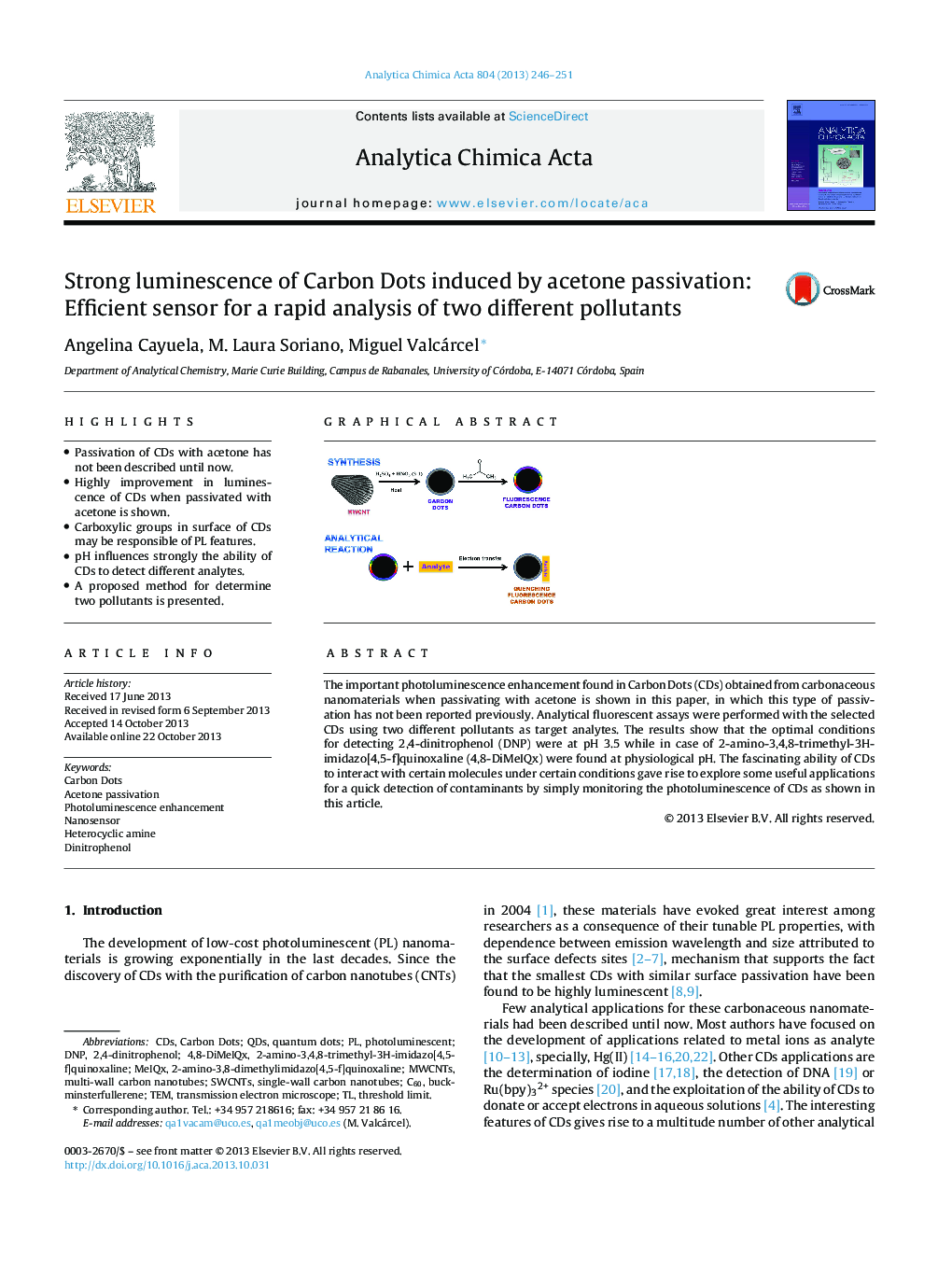| Article ID | Journal | Published Year | Pages | File Type |
|---|---|---|---|---|
| 1165249 | Analytica Chimica Acta | 2013 | 6 Pages |
•Passivation of CDs with acetone has not been described until now.•Highly improvement in luminescence of CDs when passivated with acetone is shown.•Carboxylic groups in surface of CDs may be responsible of PL features.•pH influences strongly the ability of CDs to detect different analytes.•A proposed method for determine two pollutants is presented.
The important photoluminescence enhancement found in Carbon Dots (CDs) obtained from carbonaceous nanomaterials when passivating with acetone is shown in this paper, in which this type of passivation has not been reported previously. Analytical fluorescent assays were performed with the selected CDs using two different pollutants as target analytes. The results show that the optimal conditions for detecting 2,4-dinitrophenol (DNP) were at pH 3.5 while in case of 2-amino-3,4,8-trimethyl-3H-imidazo[4,5-f]quinoxaline (4,8-DiMeIQx) were found at physiological pH. The fascinating ability of CDs to interact with certain molecules under certain conditions gave rise to explore some useful applications for a quick detection of contaminants by simply monitoring the photoluminescence of CDs as shown in this article.
Graphical abstractFigure optionsDownload full-size imageDownload as PowerPoint slide
